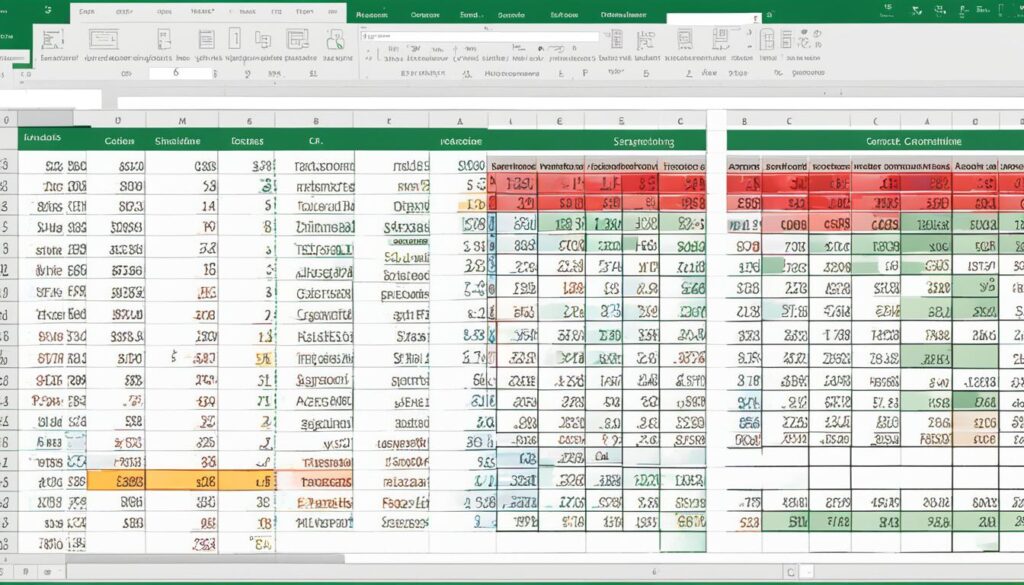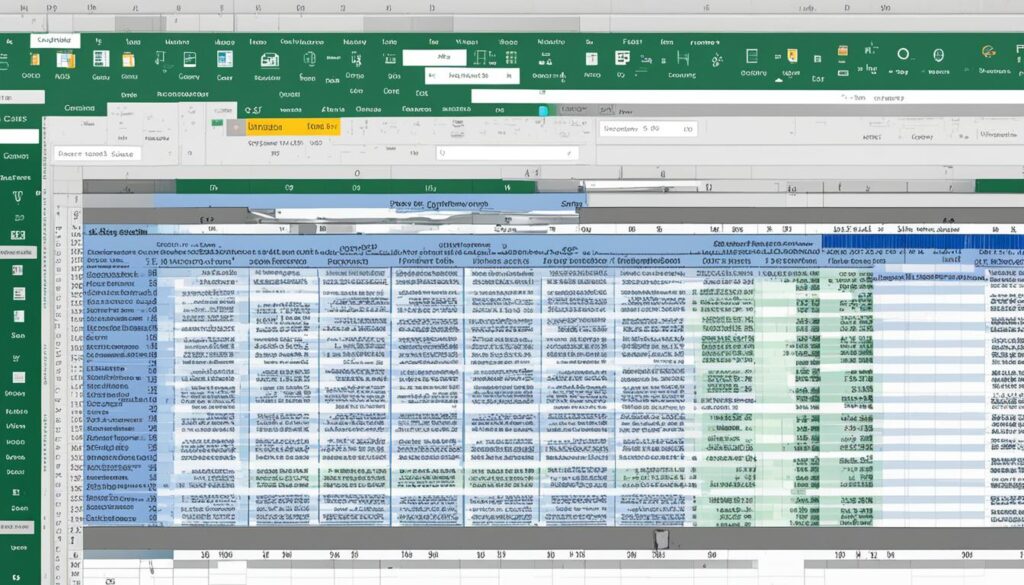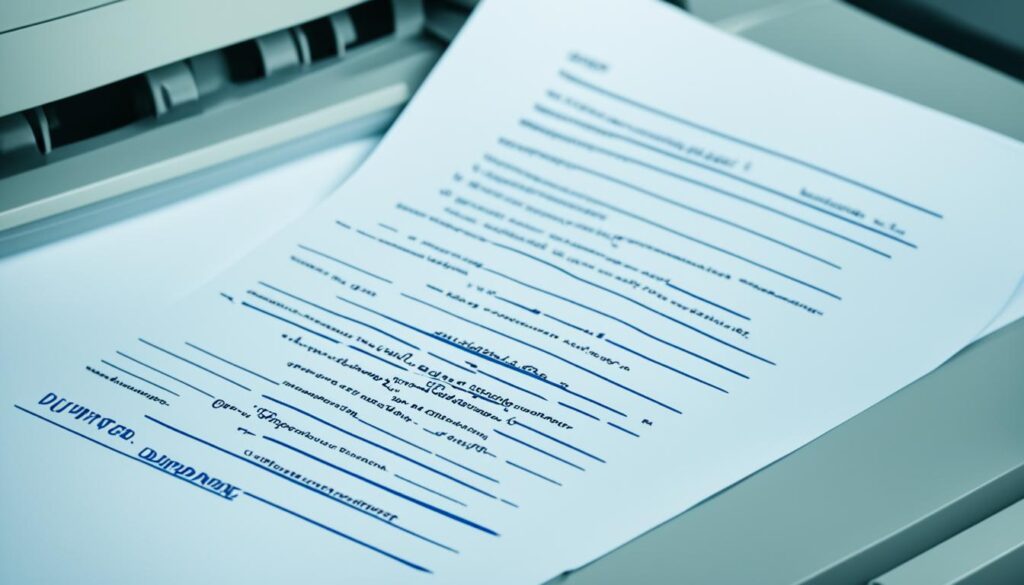Venturing into the nitty-gritty of Excel worksheets, one might encounter the unwelcome challenge of duplicates that can skew data analysis and reporting. Conditional formatting duplicates in Excel is a smart tactic that can swiftly highlight duplicates in your spreadsheet, thereby streamlining your workflow and ensuring accuracy in your data management. Whether you find yourself frequently using Excel 365, 2021, 2019, 2016, 2013, or 2010, this feature is a lifesaver for anyone drowning in data. Let’s discover how to wield this powerful tool to not only illuminate but also remove duplicates with the utmost ease.
Imagine the convenience as Excel’s conditional formatting automatically applies a visual marker to duplicated entries. This is not just about making your spreadsheet pretty; it’s about enabling instant detection of repetition, ushering in a level of clarity and control over your database that’s essential for making informed decisions. Don’t let duplicates derail your data analysis. Take control and use Excel’s capabilities to your advantage.
Key Takeaways
- Excel’s conditional formatting provides instant visual cues for duplicate data entries.
- Identify and remove duplicates with ease, keeping your data sets accurate and trustworthy.
- Excel’s conditional formatting rules work consistently across various versions.
- Effective management of duplicates is crucial for comprehensive data analysis.
- Understanding and applying this Excel feature is key to mastering data organization.
Understanding Excel Conditional Formatting for Duplicates
When you’re knee-deep in data analysis, Excel’s conditional formatting duplicates feature can be a real lifesaver. By using an excel formula, conditional formatting allows you to automatically highlight duplicate entries in your data set, making it much easier to spot redundancies or repetitive information. This tool is particularly useful in large worksheets where manual scanning can be prone to error and incredibly time-consuming.
Let’s delve into how conditional formatting duplicates work. Excel provides a range of predefined rules—such as ‘Duplicate Values’—which you can apply to your selected data range. It gives you the liberty to showcase duplicates by coloring the cells, thus making them stand out at a glance. Here’s an insightful point: while leveraging conditional formatting to mark duplicate values, Excel will focus on identifying duplicates within your specified array of cells—it doesn’t compare or highlight based on values across different selected columns or rows.
To wield this feature effectively, you need a grasp of the basics behind the excel formula mechanism that powers it. Conditional formatting for duplicates operates within the confines of the range you specify, meaning that it targets only the cells within this pre-defined area. Let’s say you only want to monitor a certain column for redundancy; conditional formatting will adhere to this specified scope, consistently marking duplicates based purely on your tailored selection. This is what makes Excel both a robust and flexible tool for data management.
- Select the data range you want to analyze for duplicates.
- Navigate to the ‘Home’ tab, and click on ‘Conditional Formatting’.
- Choose ‘Highlight Cell Rules’ followed by ‘Duplicate Values’.
- Decide on a format for the highlighted duplicates, be it a color fill or text color, to make those duplicates pop.
- Apply the format, and voilà, duplicates within the chosen range are now visibly distinct.
If the predefined options aren’t sufficient or if you need more tailored insight, there’s room for customization. You can craft your own excel formula to target specific conditions. For instance, you might want to highlight only those duplicates appearing more than twice, or perhaps ignore blanks when considering what counts as a duplicate.
Whether you’re refining a report, auditing a financial document, or just trying to organize a list, using conditional formatting for duplicates streamlines your workflow. It’s a smart move for keen-eyed professionals who appreciate efficiency and accuracy in equal measure.

Ultimately, understanding and applying Excel’s conditional formatting for duplicates not only saves time but also minimizes errors, ensuring you maintain the integrity of your data. It can be quite the game-changer for your digital datamanship, whether you’re an Excel rookie or a spreadsheet virtuoso.
When managing large datasets in Excel, learning how to highlight duplicates in Excel is crucial for efficient data analysis. Below, you’ll find a clear workflow to both identify and remove duplicates to ensure your dataset is as accurate and as clean as possible.

How To Highlight Duplicates in Excel?
The first step is to select the range of cells where you suspect there might be duplicates. Then follow these steps:
- Click on the ‘Home’ tab in the Excel ribbon.
- Find the ‘Styles’ group and click on ‘Conditional Formatting’.
- Hover over ‘Highlight Cells Rules’ and then click on ‘Duplicate Values’.
- Choose a format for highlighting the duplicates from the dropdown menu or create your own by selecting ‘Custom Format’.
- Click ‘OK’ to apply the formatting and immediately see all the highlighted duplicate values.
If you need to further refine your duplicate review process, Excel allows you to modify the formula to target specific instances of duplicates. For example, you can adjust the formula to only highlight the second or third occurrence of a value. This can be particularly helpful in distinguishing between intentional repetitions and errant duplicates that need to be resolved.
Additionally, you have the capability to not only highlight duplicates within a single column but to remove duplicates across multiple columns. Whether you’re creating a single rule that applies to the entire worksheet or separating ones for individual columns, the process empowers you to customize how you manage your data.
| Action | Result |
|---|---|
| Highlight using built-in rule | All duplicates in the specified range are highlighted. |
| Create custom rule | Selective or modified highlighting based on custom criteria. |
| Remove duplicates | Excel removes extra occurrences, keeping only one instance. |
| Apply to multiple columns | Duplicates are managed across multiple data segments simultaneously. |
To remove the highlighted duplicates, simply navigate to the ‘Data’ tab, then click ‘Remove Duplicates’. You’ll be presented with a dialogue box that lets you select which columns to include in the duplicate search. After specifying your preferences, click ‘OK’, and Excel will do the work to purge your data of any repeats.
Remember, removing duplicates is not always the goal; sometimes you simply want to highlight these instances for review. In such cases, the steps detailed above offer a clear method for visual data cleaning without permanently altering your dataset.
With these step-by-step instructions, you’re now equipped to maintain the integrity of your spreadsheets by easily identifying and managing duplicate values. This can make a substantial difference in tasks ranging from data entry to complex analysis.
How to Highlight Duplicates in Excel for Efficient Analysis
Optimizing your data analysis in Excel involves not just managing but mastering the use of particular functions and features. While dealing with duplicates can be a daunting task, Excel equips you with built-in tools designed to simplify this process. Highlighting duplicates can unearth patterns or mistakes in large datasets, making it a vital skill for any data enthusiast or professional to leverage. Let’s delve into how these utilities can serve your analytical needs.
Using Built-in Excel Features
The built-in Excel features allow users to highlight duplicates directly with predefined rules or by using custom formulas. Commencing with the use of COUNTIF is straightforward for isolating duplicates within a single column. However, when your data spans multiple columns, COUNTIFS can help you locate duplicates across these multiple fields. These functions pave the way to a more streamlined and efficient data analysis process, clearly signaling duplicated data to bolster your ability to find inconsistencies or patterns.
Here’s how you can employ the COUNTIF function:
- Select the range of cells you want to check for duplicates.
- Go to ‘Conditional Formatting’ > ‘Highlight Cell Rules’ > ‘Duplicate Values’.
- Choose the formatting you desire for the highlighted cells and click ‘OK’.
Using COUNTIFS, you can extend this process to cover multiple columns:
- Select the cell range encompassing multiple columns.
- Apply a similar process using ‘Conditional Formatting’, but adjust your formula to include multiple criteria matching your specific columns.
Custom Formatting for Distinct Duplicate Indication
For those looking for a unique indication of duplicates beyond the first occurrences, custom conditional formatting rules can be crafted. Formulas can be customized to highlight specific instances, unique values, or even to color entire rows based on duplicate values in a particular column. It’s this flexibility that permits refined analysis, especially in situations demanding the identification of absolute duplicate rows where all their columns contain identical values.
To create a rule that highlights the second and subsequent duplicates, you might use a formula like:
=COUNTIF($A$1:$A1, A2)>1
This formula will check for duplicates of the value in cell A2 from the range A1 to the end of the column, highlighting every instance after the first occurrence.
For even more complex analyses, you might use the custom conditional formatting rule to highlight entire rows:
- Choose the range you want the rule to apply to.
- Create a new formatting rule using a formula based on your criteria for highlighting.
- Designate the format and apply the rule to visualize duplicate rows entirely.
| Duplicate Criteria Example | Custom Formula | Application in Excel |
|---|---|---|
| Highlight all duplicates except first occurrence | =COUNTIF(A:A, A1) > 1 | Applies to whole column A |
| Identify duplicates across multiple columns | =AND(COUNTIF(A:A, A1) > 1, COUNTIF(B:B, B1) > 1) | Applies to Columns A and B |
| Highlight entire rows with any duplicates | =COUNTIF($A$1:$A$10, $A1) > 1 | Applies to rows 1 to 10 in Column A |
| Spot absolute identical rows | =AND(A1=B1, A1=C1) | Applies to Columns A, B, and C for row 1 |
The power of Excel lies in its ability to mold to your analytical demands, presenting visual cues that expedite your workflow and the discovery of key insights. So, whether through predefined options or custom solutions, Excel’s duplication highlighting features are an undeniable asset to your data toolkit.
Excel Formula Techniques to Identify Duplicates
When working with voluminous spreadsheets, the manual detection of duplicates can be an arduous task. To streamline your data analysis, Excel formula techniques such as COUNTIF, COUNTIFS, and VLOOKUP are invaluable tools in your arsenal. These formulas serve as an efficient alternative to conditional formatting duplicates, enabling you to create helper columns that can systematically flag repeating values. With COUNTIF and COUNTIFS, you can effortlessly pinpoint single or multiple criteria duplicates within your dataset, making it simpler to remove duplicates without painstaking manual checks.
Excel’s proficiency in handling large datasets can sometimes be challenged, leading to performance issues that can hinder your progress. In scenarios where the dataset’s complexity demands a more performance-friendly approach, utilizing a combination of sorting, filtering and simple IF formulas can significantly optimize the duplicate identification process. This technique not only smooths the pathway for a seamless analytical workflow but also ensures that your existing conditional formatting duplicates remain intact or are transformed into static formatting for any further processing tasks.
Moreover, these Excel formulas provide a level of versatility that manual searching cannot match. Employing VLOOKUP, you can relate data from different sheets and flag repeating entries with precision. This level of detail extends the boundaries of duplicate identification, pushing the capabilities of Excel formula well beyond the basic remove duplicates command. As you harness these powerful techniques, you will find yourself deftly navigating through the most complex of datasets, with confidence and control over your data integrity, paving the way for accurate reports and insightful decision-making.

